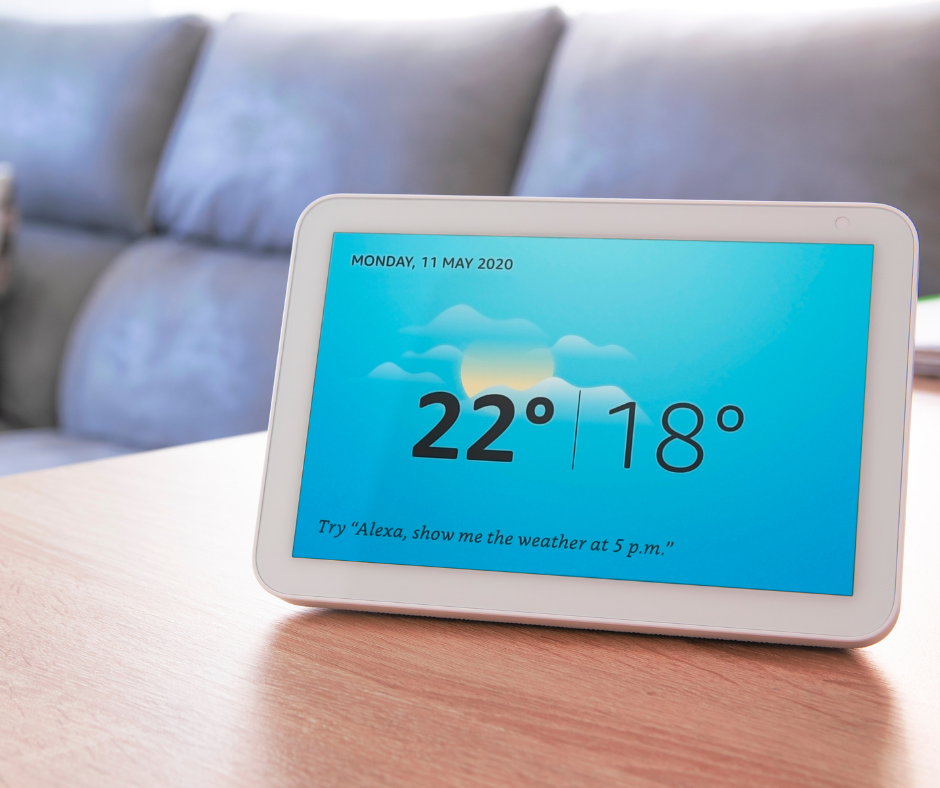The Power of Voice Command For Senior Living
Voice Command Voice command has become a regular part of consumers’ lives. Whether it be Siri, Alexa or Google, users are comfortable with the...

Like many industries, the senior living industry is continuously combating the difficult obstacles brought on by COVID-19. During the height of COVID, senior living communities had to quarantine and lockdown to protect its’ residents, residents’ families, and staff from the virus. Senior living communities all across the United States had to adapt to these changes to keep everyone safe while continuing to provide effective care and communication to residents and their families. One way that senior living communities achieved this was through introducing new technology. Caregivers and staff used technology to create activities for residents, connect residents with their friends and family, improve communication amongst staff and resident families, provide care, and more.
Before the pandemic, technology was not used often in senior living communities, especially among residents, for communication or care. Technology that they did use consisted of wearable technology, like bracelets and pendants. However, bracelets and pendants have limitations and accuracy results despite being on the market for decades. This type of technology proved it was not advanced enough to meet the demands of caregivers.
Now, trends show that as senior living leaders navigate towards a “new normal,” they will welcome new technology. These new solutions consist of AI, voice technology, and analytic monitoring tools to aid residents and staff.
The end of the pandemic is in sight. More people are getting vaccinated, and senior living communities are starting to reopen to in-person visits and staff. Despite this change, they still plan to use technology that helped them during the pandemic to continue improving and increasing the efficiency of care. Furthermore, they are starting to explore new hardware and software technology solutions to prepare for the demands and challenges of the future.
Here are three major factors for why senior living leaders want to use technology to strengthen their communities for the future:
The future of the senior living industry projects to see immense growth driven by the US aging population. According to the US Census Bureau, all Baby Boomers will be at least 65 or older by 2030, making up 21% of the total US population. This increase in the aging population will demand more from different living options, whether aging in place, retirement communities, assisted living, or memory care.
Baby Boomers value different environments, amenities, care types, and more when choosing where and how they want to age. Including the use of technology to monitor their health, communicate with their friends and family, and seek entertainment. This generation wants to use technology to lead more independent lives while still recognizing that they need care related to their aging.
To prepare for the future of their senior living communities, administrators will incorporate more advanced technology to support the independence of Baby Boomers and other residents for as long as possible. This type of technology includes streaming services for entertainment and voice technology like Amazon’s Alexa to ask for help, set reminders, and connect with their loved ones.
Another trend that will continue for senior living is the increase in seniors with higher acuity and physical disabilities moving into senior living communities. Currently, the average age of a resident in a senior living community in the US is 85 years old. People are living longer, and the aging population in the US is increasing. Therefore the need for unique and high-quality care as incoming residents arrive more crisis-driven is something that senior living communities must prepare for. Technology that can help monitor and track resident activity and predict resident care can help meet these needs.
The type of care for aging adults is also expanding, specifically mental health. When we think of seniors’ health, we tend to focus on their physical ailments rather than their mental and emotional well-being. However, the pandemic has highlighted that seniors’ mental and emotional health is just as important as physical health. Whether living in senior living communities or aging independently, seniors had to endure quarantine and social isolation, which negatively impacted their mental health. Furthermore, most seniors grew up when mental health was not cared for in the ways that it is now. For these reasons, more senior living communities are taking action in finding tech solutions to help care for seniors’ mental, emotional, and physical well-being.
The pandemic emphasized the significance of essential workers in senior living. Caregivers and other staff members were crucial in ensuring that seniors were protected and cared for even though most senior living communities were understaffed. This problem is especially critical to solving the increase in the US aging population and the demand for unique care types.
For the future, senior living communities are looking for ways to support staff however they can. For example, senior living communities are searching for tech solutions to analyze resident care and optimize staff. This means investing time into learning more about AI solutions to predict care, different tracking tools, and more.
Communities are also investing in the well-being of their staff. Just as senior living communities hope to expand mental health resources to care for seniors, they hope to expand mental health resources to support staff. This includes e-resources such as teletherapy, support guides, and other virtual employee assistance programs.
Senior living community leaders recognize that the future of senior living includes the use of new technology. Technology helped senior living communities through the pandemic. And, most continue to use technology as an alternative or even primary option for residents and staff to use moving forward. Still, the adoption of technology for the future of senior living will come with expectations from technology industry innovators on what technology will be best for seniors and staff.
A significant fear amongst senior living leaders for the future of their communities is that they do not want technology to replace the hands-on care provided to residents by caregivers and staff. It is essential to recognize aging adults and their families are entrusting senior living communities with their care, which puts senior living communities in a position to rise above resident and family expectations.
With that said, senior living leaders will not use and are not looking for technology to replace traditional, hands-on care provided by the exceptional staff in senior living communities. Instead, senior living communities will adopt and use technology to support caregivers, nurses, and staff to provide the best possible care to residents. Also, to enable residents to have a platform for gaining or maintaining a sense of independence. Overall, technology will be a pivotal part of the future of senior living to improve the interactions between caregivers and residents to create a healthier, happier environment.

Voice Command Voice command has become a regular part of consumers’ lives. Whether it be Siri, Alexa or Google, users are comfortable with the...

The Real Reasons Why the Elderly Struggle With Technology “Seniors will never understand how to use technology.” “They are too old – they...

Our Aging Population Across America, 10,000 people are turning 65 every day. That leaves a growing population in high demand for solutions to...